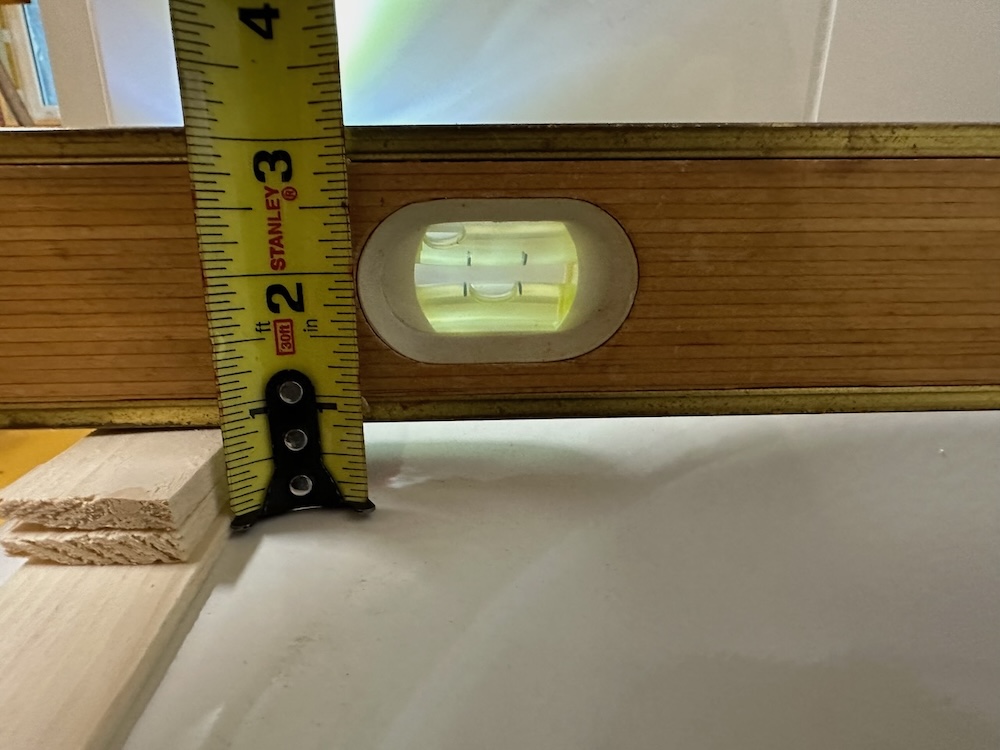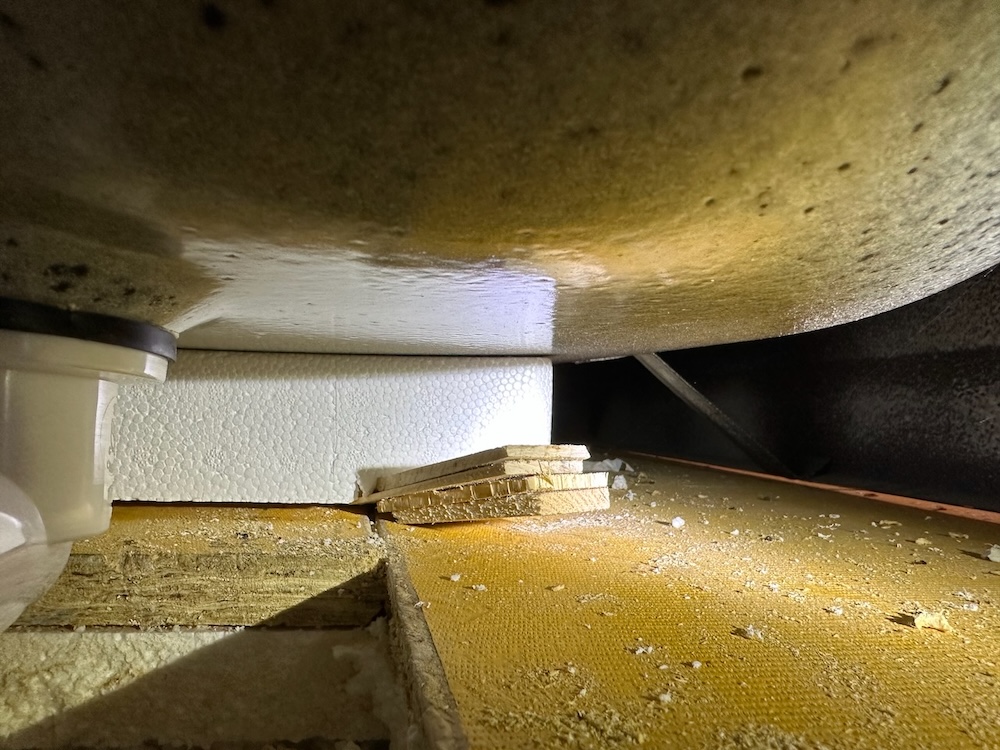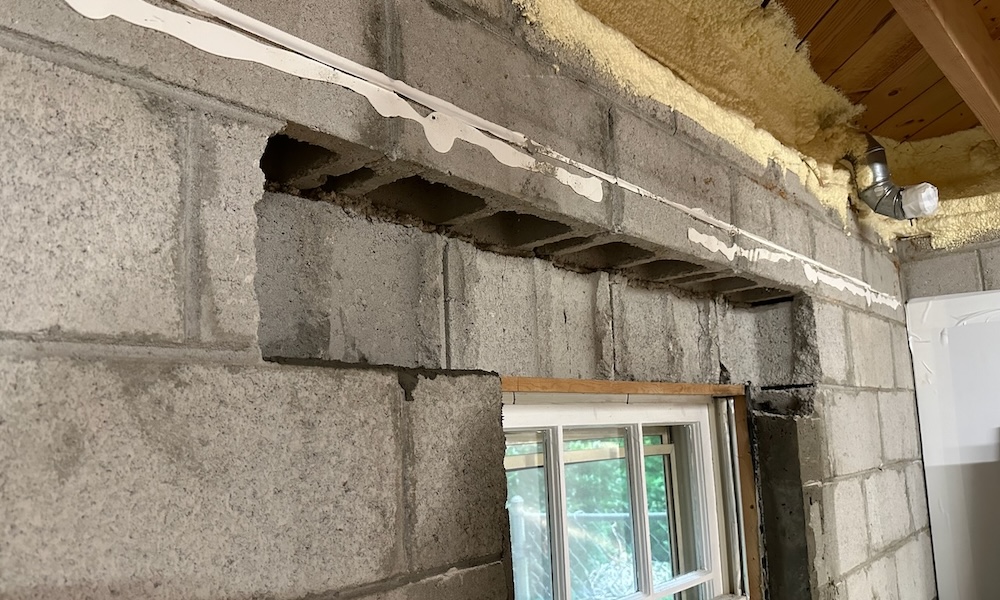The Lost Art of Quality Control
![A Quality Control Failure Led To A Strange Border At Bill Spohn's Home [Photo Courtesy Of Bill Spohn]](https://www.energyvanguard.com/wp-content/uploads/2024/11/spohn-home-sidewalk-grade-mistake.jpg)
I’m sure you’ve heard the saying, measure twice, cut once. It’s easy to take it too literally and think it applies only to things you cut. In reality, it is THE maxim of quality control. It means think, check, and double check. And then sometimes you need to get someone else to check you, too.
Here’s a video that covers this important topic, but do read the article, too. Or at least jump to the bottom and read the last two sections.
A look in the mirror
Here’s an example. Years ago, someone I knew was having a house built. They had gotten plans for a house that fit perfectly on their lot. Then they broke ground and the contractor poured the concrete foundation walls for the basement.
When the excited homeowner went to check it out after the pour, he made a sickening discovery. The house was supposed to be mirrored from the plans when built. The contractor didn’t do that. Oops! Someone missed that important detail and lost a lot of money when they had to rip it out and do it over.
A strange border
Here’s another one. Last year I did a book tour and visited Bill Spohn at his new home in Pittsburgh. It’s an absolutely gorgeous home that also happens to be a high performance home with great indoor air quality, solar electricity, and more. I really loved the way the house melds seamlessly between indoors and outdoors.
![The sidewalk mistake resulted in extra cost for trenching and putting in the curb to keep the soil from being too high on the foundation. [Photo courtesy of Bill Spohn]](https://www.energyvanguard.com/wp-content/uploads/2024/11/spohn-home-extra-trench-and-curb.jpg)
A few failures in my basement remodel
I’ve been working on a basement renovation since February of this year. You can read a lot about it here in this blog and watch related videos on our YouTube channel. I’m not acting as the general contractor because it’s a big project, and I’ve got other things going on, too.
Here are a few of the problems that have cropped up.
Bathtub out of level
Recently I was trying to install the surround kit for the bathtub in our guest suite. There was a gap at the bottom of the side panels that grew from the back side to the front.

Turns out the bathtub hadn’t been set properly. It was 3/4 of an inch out of level…along the short side. Why?

The answer is in the photo above. Rather than setting the tub in concrete or mortar, they used wood shims under the foam. It may have been level when they first installed it. The first time anyone put weight on the tub, however, the foam compressed and the shims weren’t doing anything.
Window supports
A quality control failure that happened a few months ago was the result of a contractor not doing what we told him to do. They were installing angle iron above two window openings, and my GC told them NOT to remove the concrete blocks above the window.

Well, you can see above what they did. It turned out OK in the end, but my GC and I had told the contractor three or four times not to do it that way.
Advice for better results
I wrote about my basement frustrations in a LinkedIn post recently and have gotten 130 comments so far. There was a lot of commiseration from commenters sharing their similar experiences. And I’m not just talking about homeowners. Many of these were home builders, engineers, architects, and trade contractors.
Several commenters echoed this comment from Joshua Graves: “And this is why I prefer to do as much as I can myself.” I told them I agreed generally but that this was too big a project for me to do alone. Here I am nine months in with a general contractor running things, and I’m still not done.
And then there was some really good advice. Todd Usher, a home builder in Greenville, South Carolina, said it best:
Boy don’t I know this challenge! The only way we have been able to overcome this is with a Quality System – no matter how small the job.
1) Start with a thorough scope of work that includes more visuals than words to read. “Visual Scopes” are effective. It’s amazing how many trades don’t even follow the manufacturer’s instructions!
2) Hold “day 1” meetings with each trade to review the scope for the work they are about to start.
3) Quality Inspection of the work to the scope. No payment until quality inspection is passed.
Don’t forget the critical link
You can have the best plans in the world. Every detail can be specified completely. And you still can have failures that drive you nuts. Why? Because you have to have a way of communicating those details to the people doing the work.
Case in point: Yesterday the drywall finishers showed up to put the first coat of mud on my new drywall. The contractor came over twice to go over the project, and we discussed the drywall returns we wanted at the windows. On the sides and top of all four windows, we specified bullnose corner beads. The contractor discussed the details with the workers before they began yesterday morning.

What do you see above? They got the bullnose on the top but not the sides.
The problem here was that the contractor doesn’t have a system to communicate these details effectively. Yeah, he went over it with them on the phone, and we see how well that worked. What they needed was to have those places marked so the workers wouldn’t have to remember what they were told at the beginning of the day. It would be right there in front of them when they got to it.
This would fall under Usher’s “visual scopes.” They shouldn’t have to rely on memory. The more complex the job, the less reliable memory is. The workers need visual cues, especially for anything out of the ordinary.
What quality control failures have you experienced? How did you fix them? How would you prevent them? Let me know in the comments below.
Allison A. Bailes III, PhD is a speaker, writer, building science consultant, and the founder of Energy Vanguard in Decatur, Georgia. He has a doctorate in physics and is the author of a bestselling book on building science. He also writes the Energy Vanguard Blog. For more updates, you can follow Allison on LinkedIn and subscribe to Energy Vanguard’s weekly newsletter and YouTube channel.
Related Articles
The Top 10 Mistakes I Made in Building a Green Home
The Contractor’s Fear of Third-Party HVAC Design
Signs of a Bad Duct Installation
Comments are welcome and moderated. Your comment will appear below after approval. To control spam, we close comments after one year.

I can certainly feel your pain. Among other things in my house was a back porch truss system that they had built to 3.5/12, instead of the specified 3/12. I could either reorder them and wait several weeks or figure out a way to connect them to an adjoining gable. To make the call, I needed to climb up on the ceiling joists and through the rafters to talk to the framers about our choices. We determined that a cricket would do the trick. They did remark that it was the first time a homeowner had joined them up on the roof. 🙂
Quoting … “It’s amazing how many trades don’t even follow the manufacturer’s instructions!”
That’s why when I or my children have any work done by contractors, the contract ALWAYS includes a provision that the failure of any product or installation not installed per manufacture’s instructions will (WHENEVER FOUND) be the contractor’s responsibility to repair (or pay for repair by others) unless the homeowner given prior approval to use other methods IN WRITING.
That provision HAS raised a few eyebrows, but (so far) nobody has ever walked away because of it.
This sort of thing is what Lean Construction Methodology is so useful at smoothing out. One of the key principals is the concept of effectively communicating/coordinating with the “Last Planner” (the person who’s actually on the tools), as well as “clean handoffs” (if the tech has to be swapped out for an absence of other circumstance). All of this and more equips GC’s and PM’s with strategies to eliminate the “Deadly Wastes”… https://youtu.be/qmdF-cz8gOw?si=Q69L2tuBqw3BXB-Z